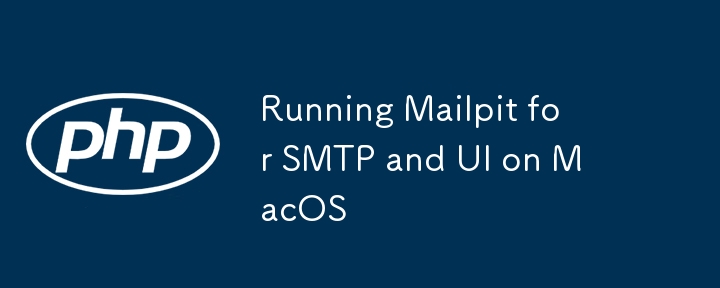

Mailpit is a tool for handling fake email deliveries, useful during application development. This tutorial will guide you through setting up and running Mailpit on MacOS with SMTP and UI configuration.
Step 1: Install Mailpit
Download and install Mailpit from the official GitHub repository. Choose the appropriate binary for MacOS.
Step 2: Running Mailpit
To start Mailpit, use the following command:
mailpit --smtp 0.0.0.0:1025 --listen 0.0.0.0:8025
This command starts the SMTP server on port 1025 and the web UI on port 8025.
SMTP: 0.0.0.0:1025 handles email delivery.
UI: 0.0.0.0:8025 allows you to view sent emails.
If you encounter an error stating that the address is already in use, ensure no other service is running on the same port. You can use a different port if needed by adjusting the command.
Step 3: Configuring Laravel Mail Settings
In your Laravel .env file, configure the mail settings:
env
MAIL_MAILER=smtp
MAIL_HOST=127.0.0.1
MAIL_PORT=1025
MAIL_USERNAME=null
MAIL_PASSWORD=null
MAIL_ENCRYPTION=null
MAIL_FROM_ADDRESS="hello@example.com"
MAIL_FROM_NAME="${APP_NAME}"
This configuration directs Laravel to send emails through Mailpit's SMTP server.
Step 4: Testing Email Sending
When your application sends an email, you can view it in the Mailpit UI by navigating to:
http://localhost:8025
This will display all emails sent by your application.
Troubleshooting
Connection Refused: Ensure Mailpit is running on the correct port (1025 for SMTP).
Port Conflict: If you encounter a "bind: address already in use" error, change the port in the command or stop the conflicting service.
That's it! You've successfully set up Mailpit to handle and display fake email deliveries in your development environment.
The above is the detailed content of Running Mailpit for SMTP and UI on MacOS. For more information, please follow other related articles on the PHP Chinese website!
 The difference between PD fast charging and general fast charging
The difference between PD fast charging and general fast charging
 How to modify the text on the picture
How to modify the text on the picture
 How to configure maven in idea
How to configure maven in idea
 Can Weibo members view visitor records?
Can Weibo members view visitor records?
 colormap function usage
colormap function usage
 win10 upgrade patch method
win10 upgrade patch method
 How to set page numbers in word
How to set page numbers in word
 What are the components of a linux system?
What are the components of a linux system?
 What is the command to delete a column in sql
What is the command to delete a column in sql




